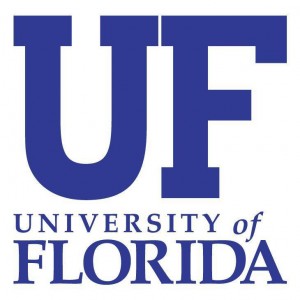Within the past two weeks, two major U.S. universities have put forth significant online initiatives that will enable more students to take their classes for first year students without putting additional strain on their classrooms or dormitories. While some similarities exist in these efforts, it is in the differences that make this so interesting.
Arizona State University has made a significant move (also, here) in the integration of online courses into higher education. Here are some of the highlights:
- They will be creating a dozen MOOCs in partnership with edX.
- These will be traditional MOOCs, in that anyone can take them for free with no admission requirement at all.
- If a student has paid a $45 fee for identity verification, then he/she can pay Arizona State a fee so that it can count for credit (assuming that the student passes the class).
- The cost of the credit is less than half as expensive as other Arizona State credits and the student does not have to pay until after passing the class. The total cost of a year of credit would be less than $6,000.
- On the transcript these courses will not be distinguished from traditional in-person courses so, in theory, these credits should be transferrable to other institutions similar to any other ASU credits.
This fits with ASU’s mission which is clearly one of inclusion given that it has 83,000 students enrolled, with 13,000 of them already online. ASU and edX are hoping for 25,000 students to enroll in each course, but they have not made public any expectations for how many students might verify their identities and then, further, how many might pay for credit. These courses should enable ASU to capture a whole range of students earning credits before they arrive on campus. They can clearly increase the size of the student body who will be eligible, and in theory prepared, to take ASU’s upper-level courses.
All of this can be contrasted with the approach taken by the University of Florida in granting online-only admissions to an additional 3100 applicants this year:
- Students who accept this admission are required to have 60 college credits before they can enroll in the traditional on-campus system. This time period for being off campus has to be at least two semesters. At least 15 of these credits have to be earned via UF online courses.
- Students admitted to this program would not have been admitted otherwise, and are only being admitted into programs and majors that are undersubscribed through traditional admissions. Further, pre-requisites in some programs will not be online so it won’t work for students in those programs, either.
- Students receive a 25% discount off normal UF tuition rates.
- The university is hoping for 300-400 students take advantage of this option.
Requirements and questions
Both of the above approaches provide a means to increase enrollment at a university without taxing dormitories or classroom buildings; however, these are two very different approaches. At one university, they very specifically target and admit students who can take their online courses via a loosening of admissions requirements. At the other university literally anyone with access to the Internet can take the course.
These programs place quite clear requirements on officials at both universities. UF officials will need to monitor the quality of students in their online courses since they are admitting students they would not have previously admitted. Both schools will need to monitor student preparation in future classes — both hope and plan that these courses will equally prepare the students, but the outcomes will need to be assessed. And these outcomes will be dependent not only on the differing format of the courses but on the differing structure of the classes. Officials at both schools, but also officials at schools around the country, will be interested to see how widely accepted these courses are for transfer credit by other universities, as well as any accreditation issues that might arise from them.
Both of these programs, though especially the one from ASU, put officials at other universities on notice. The large freshman classes are cash cows that fund or offset the small enrollment upper-level seminars that faculty love to teach. This particular outcome would strike at the heart of the part of teaching that they are attached to. Certainly, many faculty do not enjoy teaching large enrollment freshman classes…but they do enjoy the benefits that these courses allow.
The questions before university administrations are, at least, the following:
- Will these online courses be effective and popular with students? How effective? And how popular?
- If they become effective and popular, how long will it be before students enroll in them in large numbers?
- Will the students who enroll in these courses be students who want to come to my institution?
- Is my institution willing to cede the enrollments, and corresponding tuition, in these courses to other institutions?
- What is the cost of delay?
- If we lose this revenue, what effects will it have on my institution?
- If we want to get into this online education game, where do the funds come from?
- How would we ensure that the quality of these classes is up to our standards? And are our standards appropriate in this evolving world?
- How do we get the faculty we want to deliver these courses to actually deliver the courses?
These are big questions that have to be answered by both university officials and the faculty at those universities. The financial health and academic quality of each university depends on coming up with the right answers.

